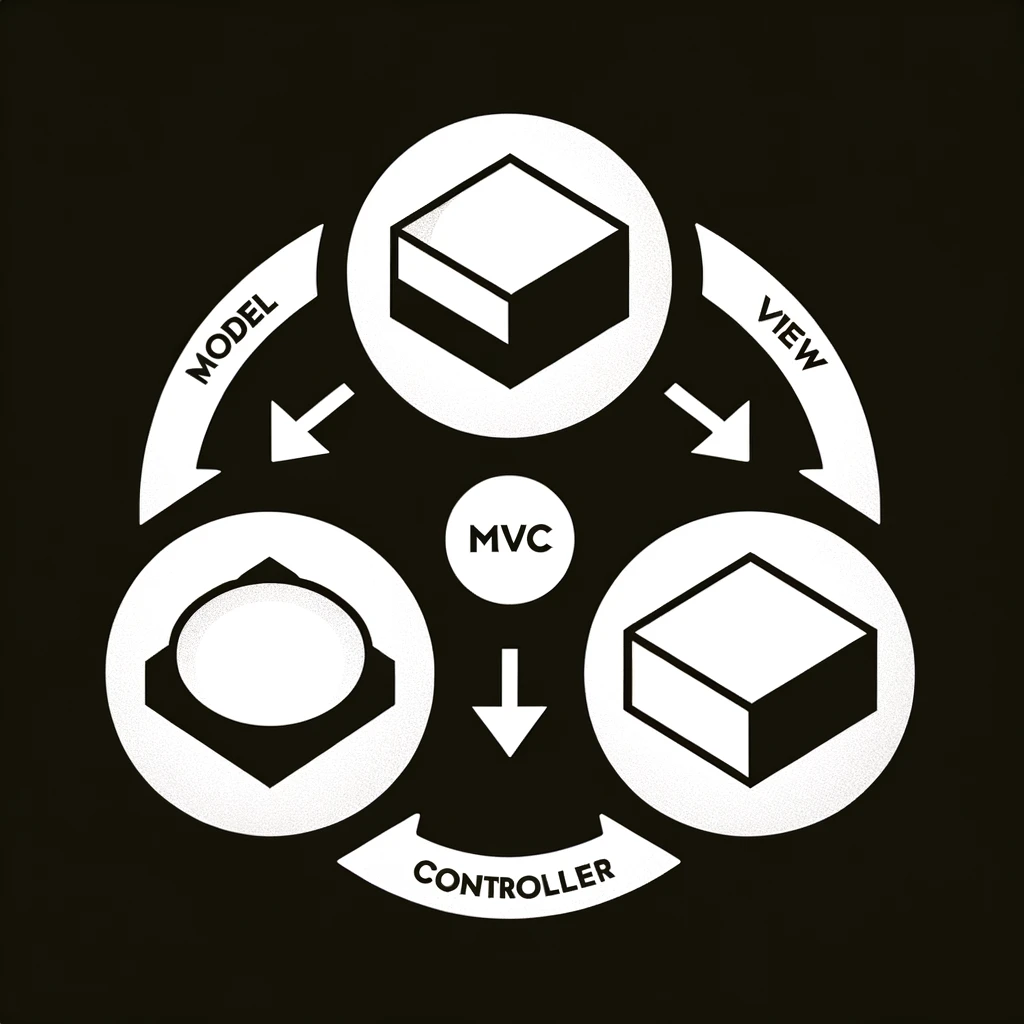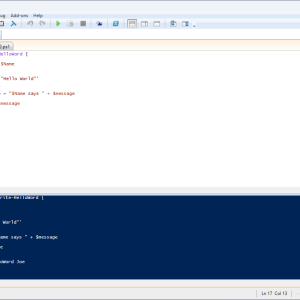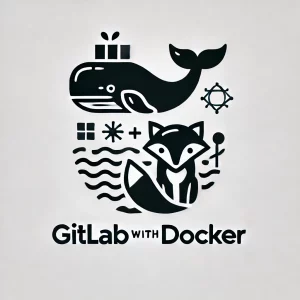Welcome back to TheITApprentice.com! In our previous article, we explored the exciting world of WordPress Plugin Development in 2024. Today, we’re going to learn about how plugins work at a high level, delving deep into the topic of WordPress Plugin Architecture. Whether you’re a beginner or an experienced developer, this comprehensive tutorial will guide you through the best practices and principles for creating robust, modular, and extensible WordPress plugins.
Introduction to WordPress Plugin Architecture Design
In this ultimate guide, we’ll cover the following essential aspects of WordPress plugin architecture design:
- Understanding the WordPress plugin ecosystem
- Key principles of plugin architecture design
- Designing plugin structure and organization
- Implementing the Model-View-Controller (MVC) pattern
- Leveraging WordPress hooks and APIs effectively
- Designing user-friendly plugin settings and admin pages
- Implementing essential plugin security measures
- Testing and debugging techniques for plugin development
- Real-world plugin architecture examples and case studies
- Best practices for maintaining and scaling plugin architecture
By mastering these crucial aspects, you’ll be well-equipped to create high-quality, maintainable, and extensible plugins that stand out in the WordPress ecosystem.
Before diving into the technical aspects of plugin architecture design, it’s essential to understand the WordPress plugin ecosystem. WordPress is a popular content management system (CMS) that powers millions of websites worldwide. Its extensibility and flexibility are largely due to its robust plugin system.
WordPress plugins are built on top of the WordPress core, which provides a set of APIs, hooks, and conventions that allow developers to extend and customize the functionality of a WordPress site. The plugin ecosystem is vast, with thousands of free and premium plugins available in the official WordPress plugin repository and various marketplaces.
As an IT apprentice or volunteer, understanding the WordPress plugin ecosystem is crucial for creating plugins that integrate seamlessly with the WordPress core and other plugins. It’s important to familiarize yourself with the WordPress plugin directory guidelines, coding standards, and best practices to ensure your plugins are compatible, secure, and maintainable.
Understanding the WordPress Plugin Ecosystem
The WordPress plugin ecosystem is a vibrant and dynamic community of developers, users, and businesses that revolve around creating, distributing, and utilizing plugins to extend the functionality of WordPress websites. Let’s take a closer look at the various aspects of this ecosystem and how it functions.
- WordPress Core and Plugin Integration At the heart of the WordPress plugin ecosystem is the WordPress core, which serves as the foundation for all plugins. The core provides a set of APIs, hooks, and conventions that allow plugins to interact with WordPress seamlessly. Plugins can tap into these APIs to extend, modify, or add new features to a WordPress site without altering the core files. For example, when you install a plugin, it becomes a part of your WordPress site’s functionality. The plugin can add new menu items to the WordPress admin panel, create custom post types, or modify the behavior of existing features. This integration is made possible by the hooks and APIs provided by the WordPress core.
- Plugin Distribution and Marketplaces WordPress plugins can be distributed through various channels, the most prominent being the official WordPress Plugin Directory (https://wordpress.org/plugins/). This directory is a centralized repository where developers can submit their plugins for free, and users can easily search, browse, and install plugins directly from their WordPress admin panel. To have a plugin listed in the official directory, developers must adhere to the WordPress plugin guidelines and coding standards. This ensures that the plugins are secure, compatible, and maintainable. Users can trust that the plugins in the official directory have undergone a review process and meet certain quality standards. In addition to the official directory, there are numerous marketplaces and websites that offer both free and premium WordPress plugins. These include popular platforms like CodeCanyon, ThemeForest, and independent plugin shops. Premium plugins often offer more advanced features, regular updates, and dedicated support compared to their free counterparts.
- Plugin Installation and Management Installing a WordPress plugin is a straightforward process. Users can either search for plugins directly from their WordPress admin panel by navigating to “Plugins” > “Add New” or download plugin files from external sources and upload them via the “Upload Plugin” option. Once a plugin is installed, it needs to be activated to start functioning. Users can manage their installed plugins from the “Plugins” page in the WordPress admin panel. From there, they can activate, deactivate, update, or delete plugins as needed. It’s crucial to keep plugins up to date to ensure compatibility with the latest version of WordPress and to address any security vulnerabilities or bug fixes. WordPress provides built-in functionality to update plugins with just a few clicks.
- Plugin Customization and Configuration Most plugins offer various settings and options that allow users to customize their behavior and appearance to suit their specific needs. These settings can be accessed through the plugin’s dedicated settings page within the WordPress admin panel. Developers can also provide hooks and filters within their plugins, allowing other developers or advanced users to further customize the plugin’s functionality by writing custom code snippets or creating add-ons.
- Plugin Compatibility and Troubleshooting With thousands of plugins available, compatibility issues can sometimes arise when multiple plugins are activated on the same WordPress site. It’s essential for plugin developers to follow best practices and coding standards to minimize conflicts and ensure smooth integration with other plugins and themes. When troubleshooting plugin-related issues, users can start by deactivating plugins one by one to identify the culprit. The WordPress support forums and plugin-specific support channels are valuable resources for finding solutions and getting assistance from the community.
- Plugin Business Models and Sustainability The WordPress plugin ecosystem has given rise to various business models. Many plugins are released as free, open-source software, relying on donations or sponsorships for sustainability. Others follow a freemium model, offering a limited free version with the option to upgrade to a premium version with additional features and support. Premium plugins often come with a one-time purchase fee or a recurring subscription model. They provide a more comprehensive set of features, regular updates, and priority support. Some plugin developers also offer custom development services or plugin customization for clients with specific requirements.
- Plugin Community and Education The WordPress plugin ecosystem thrives on the contributions and interactions of its community members. WordPress.org provides forums where users can seek help, report bugs, and suggest improvements for specific plugins. Plugin developers often engage with their users through these forums, providing support and gathering feedback. In addition, there are numerous online resources, tutorials, and courses available to help developers learn WordPress plugin development. Websites like WordPress.org Codex, WordPress Developer Resources, and various dev blogs are valuable sources of information and guidance.
Now that you have a basic understanding of the WordPress plugin ecosystem let’s summarize the key points from a developer’s perspective:
- WordPress plugins are built on top of the WordPress core, utilizing its APIs, hooks, and conventions to extend functionality.
- Plugins can be distributed through the official WordPress Plugin Directory or various marketplaces, both free and premium.
- Developers must adhere to WordPress plugin guidelines and coding standards to ensure compatibility and maintainability.
- Plugins can be installed, activated, and managed directly from the WordPress admin panel.
- Customization and configuration options are commonly provided through plugin settings pages.
- Compatibility issues can arise, and troubleshooting involves deactivating plugins and seeking community support.
- Plugin business models include free, freemium, and premium offerings, with various monetization strategies.
- The WordPress plugin community actively contributes through forums, resources, and educational content.
Now, let’s move on to the next section of the article, where we’ll dive into the key principles of plugin architecture design.
Ten Key Principles of Plugin Architecture Design
When designing the architecture of a WordPress plugin, several key principles should be followed to create a robust, modular, and extensible structure. These principles form the foundation of good plugin architecture and help in creating plugins that are easy to maintain, scale, and extend.
- Separation of Concerns (SoC)
Separation of Concerns is a fundamental principle in software development that advocates for dividing a system into distinct sections, each addressing a separate concern or responsibility. In the context of WordPress plugin architecture, this means separating the plugin’s functionality into logical modules or components, such as database operations, frontend display, backend administration, and utility functions. By applying the SoC principle, you can create a modular plugin structure where each component has a specific purpose and can be developed, tested, and maintained independently. This promotes code reusability, maintainability, and easier collaboration among development teams. - Don’t Repeat Yourself (DRY)
The DRY principle emphasizes the reduction of duplication in code. It states that every piece of knowledge or logic should have a single, unambiguous representation within a system. In WordPress plugin development, this means avoiding duplicating code across different parts of the plugin and instead promoting code reuse through functions, classes, and templates. By adhering to the DRY principle, you can create a more efficient and maintainable plugin codebase. When a particular functionality needs to be updated or fixed, you only need to modify it in one place, reducing the chances of introducing bugs or inconsistencies. - Single Responsibility Principle (SRP)
The Single Responsibility Principle states that a class or module should have only one reason to change. In other words, each component of your plugin should have a single, well-defined responsibility. This principle promotes creating focused and cohesive components that are easier to understand, test, and maintain. For example, a class responsible for interacting with the database should not also handle user input validation or frontend rendering. By assigning clear responsibilities to each component, you can create a more organized and maintainable plugin structure. - Extensibility and Hooks
WordPress plugins should be designed with extensibility in mind, allowing other developers to customize and extend the plugin’s functionality without modifying its core files. WordPress provides a powerful hook system, consisting of actions and filters, which enables developers to inject custom code at specific points during the execution of a plugin or theme. When designing your plugin architecture, consider providing appropriate hooks at strategic locations, such as before or after crucial operations, allowing other developers to modify or enhance the plugin’s behavior. By documenting these hooks and providing examples, you can create a plugin that is developer-friendly and encourages collaboration and customization. - Security and Data Validation
Security is a critical concern in WordPress plugin development. Plugin architecture should incorporate security measures to protect against common vulnerabilities, such as SQL injection, cross-site scripting (XSS), and unauthorized access. This includes validating and sanitizing user input, using prepared statements for database queries, and implementing proper access controls and permissions.
When handling sensitive data, such as user information or payment details, it’s crucial to follow secure coding practices and adhere to industry standards like SSL/HTTPS encryption and PCI compliance. Regular security audits and updates should be part of your plugin maintenance process to address any emerging vulnerabilities. - Performance Optimization
Plugin performance directly impacts the overall performance of a WordPress site. Poorly optimized plugins can slow down page load times, affect user experience, and strain server resources.
When designing your plugin architecture, consider performance optimization techniques to ensure efficient execution and minimal impact on site speed. This includes optimizing database queries, minimizing the use of resource-intensive operations, caching frequently accessed data, and leveraging WordPress’s built-in caching mechanisms. By carefully considering performance during the architecture design phase, you can create plugins that are fast, responsive, and scalable. - Internationalization and Localization
WordPress is a global platform, and plugins should be designed with internationalization (i18n) and localization (l10n) in mind. Internationalization involves preparing your plugin’s codebase to support multiple languages, while localization involves providing translated strings and resources for specific languages.
When designing your plugin architecture, use WordPress’s internationalization functions, such as__(),_e(), and_n(), to wrap translatable strings. Provide a POT (Portable Object Template) file for translators and consider using language packs to distribute translations separately from the plugin’s core files. - Backward Compatibility and WordPress Standards
WordPress has a strong commitment to backward compatibility, ensuring that plugins and themes continue to function properly across different versions of the platform. When designing your plugin architecture, consider compatibility with older versions of WordPress and any deprecated functions or APIs.
Following WordPress coding standards and best practices is essential for creating plugins that integrate seamlessly with the WordPress ecosystem. This includes adhering to the WordPress PHP Coding Standards, using proper naming
conventions, and leveraging WordPress’s built-in functions and APIs whenever possible. - Testing and Quality Assurance
Testing and quality assurance are integral parts of plugin development. Plugin architecture should incorporate testing strategies, including unit testing, integration testing, and acceptance testing.
Automated testing tools and frameworks, such as PHPUnit and WordPress’s built-in testing framework, can help ensure the reliability and stability of your plugin. Implementing a comprehensive testing strategy helps catch bugs, regressions, and compatibility issues early in the development process, reducing the risk of releasing faulty code to users. Regular testing and quality assurance practices contribute to the overall maintainability and longevity of your plugin. - Documentation and User Experience
Clear and comprehensive documentation is essential for both developers and end-users of your plugin. When designing your plugin architecture, consider creating developer documentation that explains the plugin’s structure, key components, hooks, and APIs. This documentation should be easily accessible and kept up to date as the plugin evolves. For end-users, provide user-friendly documentation, tutorials, and guides that explain how to install, configure, and use your plugin effectively.
Consider incorporating contextual help and tooltips within the plugin’s user interface to assist users in understanding various settings and options. User experience (UX) is another crucial aspect of plugin architecture design. Design your plugin’s settings pages, admin interfaces, and frontend components with usability and accessibility in mind. Follow WordPress’s UI design patterns and guidelines to create a consistent and intuitive user experience that aligns with the overall WordPress ecosystem.
The Power of AI in WordPress Plugin Development
As an IT apprentice or volunteer, you might be wondering how AI can help you in designing plugin architecture.
By leveraging AI, you can:
- Generate boilerplate code for plugin components
- Create skeleton classes and functions based on best practices
- Ensure adherence to WordPress coding standards
- Speed up your development process and focus on implementing unique functionality
Let’s explore some effective chat prompts you can use to generate code structures and examples for each part of the article:
1. Generating Boilerplate Code for Plugin Components
- “Generate a boilerplate code structure for a WordPress plugin with separate admin and front-end functionality.”
- “Create a skeleton class for a WordPress plugin’s core functionality, including activation and deactivation hooks.”
2. Creating Skeleton Classes and Functions Based on Best Practices
- “Generate a skeleton class for a WordPress plugin’s custom post type, following best practices.”
- “Create a skeleton function for registering and enqueuing plugin assets, adhering to WordPress coding standards.”
3. Ensuring Adherence to WordPress Coding Standards
- “Analyze the provided WordPress plugin code and suggest improvements to adhere to WordPress coding standards.”
- “Generate a WordPress plugin code snippet that demonstrates proper use of internationalization functions.”
4. Speeding Up the Development Process
- “Create a basic structure for a WordPress plugin’s settings page, including form fields and validation.”
- “Generate a skeleton class for handling AJAX requests in a WordPress plugin.”
In my old YouTube video, I demonstrate how you can use AI-powered tools to generate code structures and templates: but you’ll need to doctor your text prompts and tailor them for your WordPress plugins.
Plugin Folder Structure and File Organization
A well-organized plugin folder structure is crucial for maintainability and scalability. Let’s take a look at an example folder structure for a plugin called “it-apprentice-lms”:
You can generate yourself a WordPress Plugin File Code Structure just like this by following the text prompts I give you below but first please study this one I made earlier.
it-apprentice-lms/
├── assets/
│ ├── css/
│ │ ├── admin.min.css
│ │ └── frontend.min.css
│ ├── images/
│ │ └── logo.png
│ └── js/
│ ├── admin.min.js
│ └── frontend.min.js
├── docs/
│ ├── developer-guide.md
│ └── user-manual.md
├── includes/
│ ├── achievements/
│ │ ├── achievement-manager.php
│ │ └── achievement-type.php
│ ├── admin/
│ │ ├── admin-menu.php
│ │ ├── course-admin.php
│ │ ├── lesson-admin.php
│ │ ├── question-admin.php
│ │ ├── quiz-admin.php
│ │ ├── reports-admin.php
│ │ ├── settings-admin.php
│ │ └── user-achievements-admin.php
│ ├── cache/
│ │ ├── cache-manager.php
│ │ └── transient-cache.php
│ ├── certificates/
│ │ ├── certificate-generator.php
│ │ └── templates/
│ │ └── certificate-template.php
│ ├── database/
│ │ ├── course-db.php
│ │ ├── lesson-db.php
│ │ ├── question-db.php
│ │ ├── quiz-db.php
│ │ ├── user-achievements-db.php
│ │ └── user-progress-db.php
│ ├── frontend/
│ │ ├── course-display.php
│ │ ├── lesson-display.php
│ │ ├── quiz-display.php
│ │ ├── user-account.php
│ │ ├── user-achievements-display.php
│ │ └── user-progress.php
│ ├── security/
│ │ ├── capabilities-manager.php
│ │ ├── input-validation.php
│ │ └── security-manager.php
│ ├── seo/
│ │ ├── schema-markup.php
│ │ └── seo-optimizer.php
│ ├── shortcodes/
│ │ ├── course-shortcode.php
│ │ ├── lesson-shortcode.php
│ │ └── quiz-shortcode.php
│ ├── widgets/
│ │ ├── featured-courses-widget.php
│ │ └── user-progress-widget.php
│ ├── it-apprentice-lms-loader.php
│ └── it-apprentice-lms.php
├── languages/
│ └── it-apprentice-lms.pot
├── templates/
│ ├── archive-course.php
│ ├── single-course.php
│ ├── single-lesson.php
│ ├── single-quiz.php
│ └── user-account.php
├── tests/
│ ├── integration/
│ └── unit/
├── it-apprentice-lms.php
└── uninstall.phpLet’s briefly explain the purpose of some key files and folders:
- assets/: Contains plugin assets such as CSS, JavaScript, and images.
- docs/: Includes developer documentation and user manuals.
- includes/: Houses the main plugin functionality, organized into subdirectories based on features or responsibilities (e.g., admin, frontend, database).
- languages/: Stores language files for internationalization.
- templates/: Contains template files for displaying plugin content.
- tests/: Includes unit and integration tests for the plugin.
- it-apprentice-lms.php: The main plugin file that initializes the plugin.
- uninstall.php: Handles plugin uninstallation tasks.
By organizing your plugin files and folders in a logical manner, you can improve code readability, maintainability, and collaboration with other developers.
Let’s focus on the plugin folder structure and file organization section and dive deeper into how it was generated and how it compares to architectural standards. We’ll extend this section while ensuring we don’t duplicate information already covered in the full blog post.
Plugin Folder Structure and File Organization: A Deep Dive
In the previous section, we provided an example folder structure for a plugin called “it-apprentice-lms.” This structure was generated using a combination of best practices, architectural principles, and the power of AI. Let’s explore how this structure was created and how it aligns with industry standards.
Generating the Plugin Structure with AI
To generate the initial plugin folder structure, we utilized AI-powered tools and carefully crafted prompts. The prompts were designed to guide the AI in creating a modular, organized, and scalable structure. Here are a few examples of the prompts used:
“Generate a plugin folder structure for a WordPress LMS plugin, separating concerns into admin, frontend, database, and utility directories.”

“Create a folder structure that follows the Model-View-Controller (MVC) pattern for a WordPress plugin.”
“Design a plugin architecture that promotes modularity, reusability, and maintainability.”
By providing clear and specific instructions to the AI, we were able to generate a folder structure that adheres to best practices and architectural principles.
Comparing the Generated Structure to Architectural Standards
The generated plugin folder structure aligns well with industry standards and architectural patterns commonly used in WordPress plugin development. Let’s examine how it compares to these standards:
- Separation of Concerns The structure clearly separates different concerns into dedicated directories. The
admin/,frontend/, anddatabase/directories isolate specific functionalities, making the codebase more modular and maintainable. This separation allows developers to focus on specific areas of the plugin without affecting others. - Model-View-Controller (MVC) Pattern While WordPress doesn’t strictly enforce the MVC pattern, the generated structure loosely follows its principles. The
database/directory represents the Model, handling data storage and retrieval. Thetemplates/directory acts as the View, containing template files for displaying plugin content. Theincludes/directory, with its various subdirectories, represents the Controller, managing the plugin’s logic and flow. - Scalability and Extensibility The modular structure of the plugin allows for easy scalability and extensibility. As the plugin grows, new features can be added by creating additional files and directories within the relevant sections. The
includes/directory, in particular, provides a logical place to add new functionalities without cluttering the main plugin file. - Naming Conventions The generated structure follows clear and descriptive naming conventions for directories and files. This makes it easier for developers to navigate and understand the purpose of each component. For example, the
admin/directory contains files related to the plugin’s admin functionality, while thefrontend/directory houses files responsible for the user-facing aspects of the plugin. - Asset Organization The
assets/directory provides a dedicated location for storing plugin assets such as CSS, JavaScript, and images. This separation keeps the plugin’s assets organized and allows for efficient management and optimization. - Testing and Documentation The structure includes directories for
tests/anddocs/, promoting a culture of testing and documentation. Thetests/directory can house unit tests and integration tests, ensuring the plugin’s stability and reliability. Thedocs/directory provides a place for developer documentation and user manuals, facilitating collaboration and user adoption.
By comparing the generated plugin folder structure to architectural standards, we can see that it effectively incorporates best practices and promotes a modular, maintainable, and extensible plugin architecture.
Leveraging AI for Continuous Improvement in WordPress Plugin Architecture
While the generated structure provides a solid foundation, it’s important to continuously refine and adapt it as the plugin evolves. AI can be leveraged to suggest improvements and optimizations based on the plugin’s specific requirements and growth.
For example, as new features are added, AI can help in generating appropriate file and directory names, ensuring consistency and clarity throughout the codebase. It can also assist in identifying potential architectural improvements, such as suggesting better separation of concerns or highlighting areas that can benefit from refactoring.
However, it’s crucial to remember that AI is a tool to aid in plugin development, not a replacement for human expertise and judgment. Developers should always review and validate the AI-generated code and structure to ensure it aligns with the plugin’s goals and maintains code quality standards.
Separation of Concerns in Real-World Plugin Examples
Separation of concerns is a crucial principle in plugin architecture design. It involves dividing your plugin into distinct modules, each responsible for a specific functionality. This promotes code organization, maintainability, and reusability. Let’s explore how separation of concerns can be applied in our real-world plugin examples:
Case Study 1: Simple Social Sharing Plugin
In the simple social sharing plugin example, we can apply separation of concerns by:
- Creating separate modules for each social media platform’s sharing functionality (e.g., Facebook, Twitter, LinkedIn)
- Implementing a dedicated settings module to handle user configuration options and API key management
- Utilizing a separate module for injecting sharing buttons into post content and templates
Case Study 2: Advanced E-commerce Integration Plugin
In the advanced e-commerce integration plugin example, separation of concerns can be achieved by:
- Separating product synchronization, order processing, and user management logic into distinct modules
- Creating a dedicated API client module to handle secure communication with the e-commerce platform
- Implementing separate modules for custom post types, taxonomies, and admin pages related to product management and synchronization settings
By applying separation of concerns, you can create a more organized, maintainable, and extensible plugin architecture. Each module focuses on a specific responsibility, making it easier to update, test, and debug individual components without affecting the entire plugin.
Avoiding Bad WordPress Plugin Architecture with AI
While AI can be a powerful tool for generating code structures and templates, it’s important to be cautious and avoid using prompts that may lead to bad plugin architectures. Here are a few examples of AI prompts to avoid:
- “Generate a WordPress plugin that handles all functionality in a single file.”
- “Create a plugin that directly modifies WordPress core files.”
- “Design a plugin architecture that tightly couples all components together.”
- “Implement a plugin that uses global variables for storing and accessing data.”
Remember, the goal is to use AI as a tool to generate code that follows best practices and promotes a modular, maintainable, and extensible architecture. Always review and refine the generated code to ensure it aligns with the principles and patterns discussed in this tutorial.
Leveraging GitHub for WordPress Plugin Architecture Design
GitHub is a powerful platform for collaborating on plugin development and managing your plugin’s codebase. By leveraging GitHub, you can:
- Store and version control your plugin’s source code
- Collaborate with other developers and contribute to open-source projects
- Utilize issue tracking and project management features to streamline development
- Publish and distribute your plugin to the WordPress community
To get started with GitHub for your WordPress plugin development, check out the official WordPress repository and explore popular plugin repositories for inspiration and best practices.
In this comprehensive guide to WordPress plugin architecture design, we’ve explored the principles, patterns, and best practices that will help you create robust, modular, and extensible plugins. By understanding and applying these concepts, you’ll be well on your way to developing high-quality plugins that make a difference in the WordPress ecosystem.
Throughout this tutorial, we’ve emphasized the importance of leveraging AI and tools like GitHub to streamline your plugin development process and collaborate effectively with others. Separation of concerns, as demonstrated in the real-world examples provided, is a key principle to keep in mind when designing your plugin architecture.
But this is just the beginning of your plugin development journey! Stay tuned for our upcoming articles in this series, where we’ll dive into advanced topics such as:
- Securely Coding for WordPress Plugins: Discover best practices for ensuring your plugins are safe from common vulnerabilities.
- Troubleshooting Bitnami VM Appliance 101: Get essential tips and tricks to navigate common issues with the Bitnami VM setup.
- Effective Plugin Code Generation: Learn how to streamline your coding with tools and techniques that speed up plugin development.
- Advanced Topics in Plugin Development:
- Working with SQL in Plugins: Explore how to safely integrate SQL into your plugins.
- Java for WordPress Plugins: Uncover the benefits and methods of incorporating Java into your plugin development.
- PHP and MySQL Security Considerations: Learn crucial security measures to protect your data and code.
- Real-world Examples and Case Studies: Gain insights from experienced developers who are shaping the future of WordPress plugins.
We encourage you to join our vibrant community of IT apprentices, volunteers, and enthusiasts on our Discord server at https://discord.gg/wDTgvp2N. Connect with like-minded individuals, share your experiences, and learn from others who are passionate about WordPress plugin development.
Remember, the world of plugin development is constantly evolving, and there’s always more to learn. Keep experimenting, seeking feedback, and refining your skills. The WordPress community is here to support you every step of the way.
We hope this tutorial has provided you with a solid foundation in WordPress plugin architecture design. If you have any questions or want to share your own experiences, join the conversation on our Discord server or leave a comment below.
Happy coding, and may your plugins be architecturally sound and innovative!
Frequently Asked Questions
To further assist you on your journey to mastering WordPress plugin architecture design, let’s address some common questions:
- What is the best way to organize plugin settings? When organizing plugin settings, consider using the WordPress Settings API. This API provides a standardized way to create, manage, and validate plugin settings. By utilizing the Settings API, you can ensure a consistent and user-friendly experience for configuring your plugin.
- How can I make my plugin extensible for other developers? To make your plugin extensible, leverage WordPress hooks (actions and filters) throughout your plugin’s codebase. By providing well-documented hooks at strategic locations, other developers can easily customize and extend your plugin’s functionality without modifying the core plugin files. Additionally, consider using object-oriented programming principles and design patterns to create a modular and flexible architecture.
- What are some common pitfalls to avoid when designing plugin architecture? Some common pitfalls to avoid include:
- Tightly coupling plugin components, making it difficult to maintain and extend the codebase
- Overusing global variables, which can lead to naming conflicts and make the code harder to reason about
- Neglecting security best practices, such as input validation and sanitization
- Not following WordPress coding standards and conventions, which can make collaboration and integration with other plugins more challenging
- How often should I refactor my plugin’s architecture? Refactoring your plugin’s architecture should be an ongoing process as your plugin grows and evolves. Regularly review your codebase for opportunities to improve organization, performance, and maintainability. However, be cautious not to over-refactor or introduce unnecessary complexity. Strike a balance between improving the architecture and maintaining stability for your users.
By keeping these questions and their answers in mind, you’ll be well-equipped to tackle the challenges of WordPress plugin architecture design and create plugins that are both functional and maintainable.
Remember, the journey of mastering plugin development is an ongoing process. Stay curious, keep learning, and don’t hesitate to seek guidance from the supportive WordPress community at TheITApprentice.com. Together, we can shape the future of WordPress plugins and make a positive impact on the web.
Join Our Community!
🌟 Get exclusive insights and the latest IT tools and scripts, straight to your inbox.
🔒 We respect your privacy. Unsubscribe at any time.









